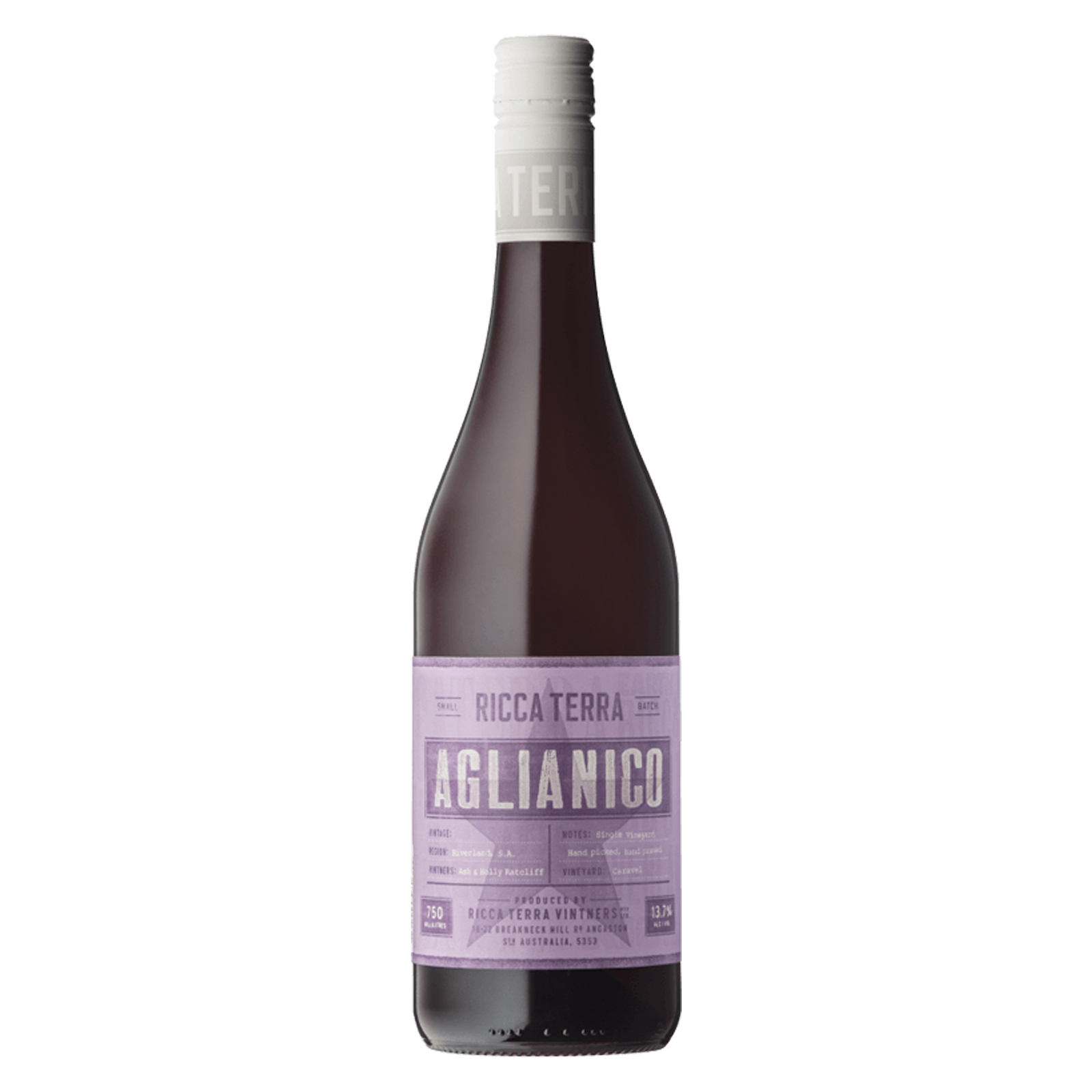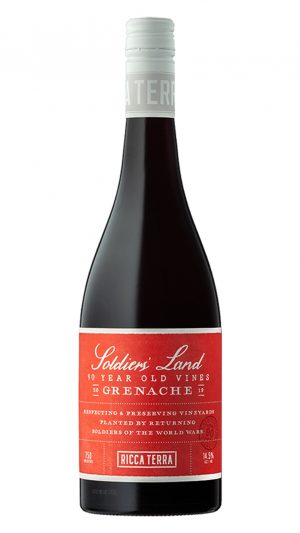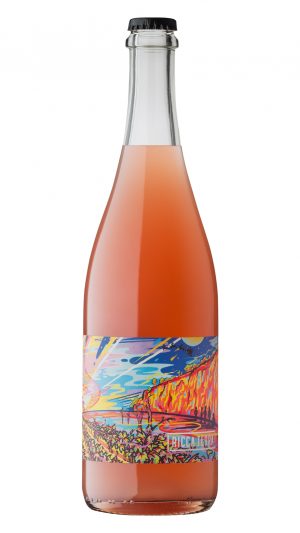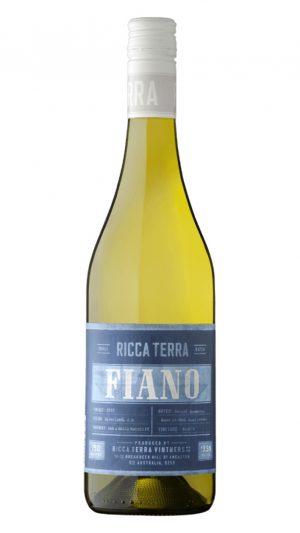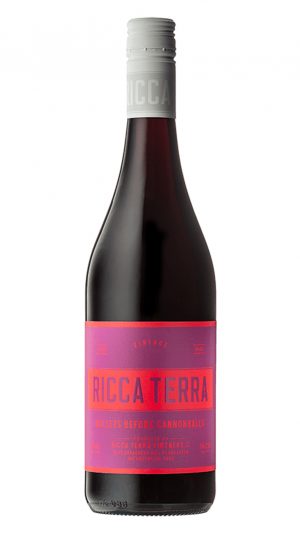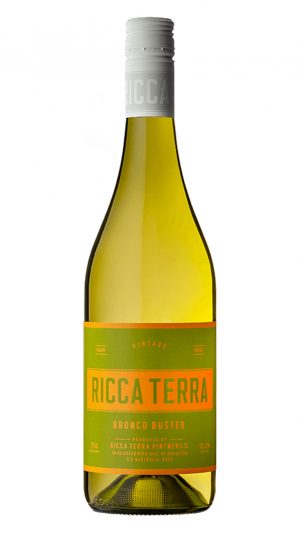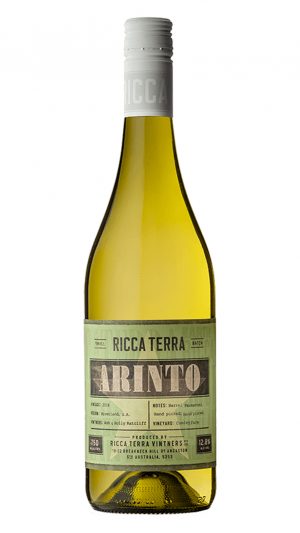Ricca Terra Aglianico 2020
Type: Red
Country: Australia
Region: South Australia, Riverland
Grape Variety: 100% Aglianico
Climate: Warm and dry climatic conditions
Winemaking: The Ricca Terra Aglianico is a blend of the Vulture and Taurus clones. The clones create a wine that has a deep colour and rich flavours. Assisting these new clones in how they are managed! They are hand pruned and hand-picked and placed in cold storage immediately after being harvested. Once in the winery, a portion of the delivered grapes are not crushed, rather the whole/uncrushed bunches are added to the ferment, which adds complexity to the final wine. The use of natural yeast strains, which originate from the vineyard, heightens the excitement of this wine.
Color: Deep red
Nose: Lovely floral/herbal fruit expression
Palate: Savoury notes with hints of pepper and sweeter notes of black cherry and plum
About the Winery:
Ashley and Holly Ratcliff’s Ricca Terra Farms set out to shake up perceptions of the Riverland as a region that only grew grapes for generic bulk wine. They believed that by implementing quality-minded practices and focusing on climate-apt varieties, they would be able to unlock the region’s potential. By any measure, they have succeeded, elevating the profiles of grapes like Nero d’Avola, Fiano, Aglianico and Arinto in the process. But that wasn’t all, with the Caravel Vineyard planted relatively recently to largely celebrate Portuguese varieties, like Touriga Nacional, Tinta Cão and Tinta Barroca, along with some more Italians. The fruit goes to their own Ricca Terra and Terra do Rio labels, as well as being sold to top makers around the region.
Today’s Ricca Terra farms are planted to some classic French mainstay varieties, like with much of the Riverland, but many are old vine plots from soldier settlement schemes from WWI and WWII. Along with renovating old olive groves and farmhouses, this is as much about preserving history as anything, with a raft of Italian and Iberian varieties taking the progressive lead across the 10 sites, with 80 hectares of land under vine, and over 30 grape varieties represented.

